Timeline Of Stegosaur Research on:
[Wikipedia]
[Google]
[Amazon]
 This timeline of stegosaur research is a chronological listing of events in the
This timeline of stegosaur research is a chronological listing of events in the


 1874
*
1874
*
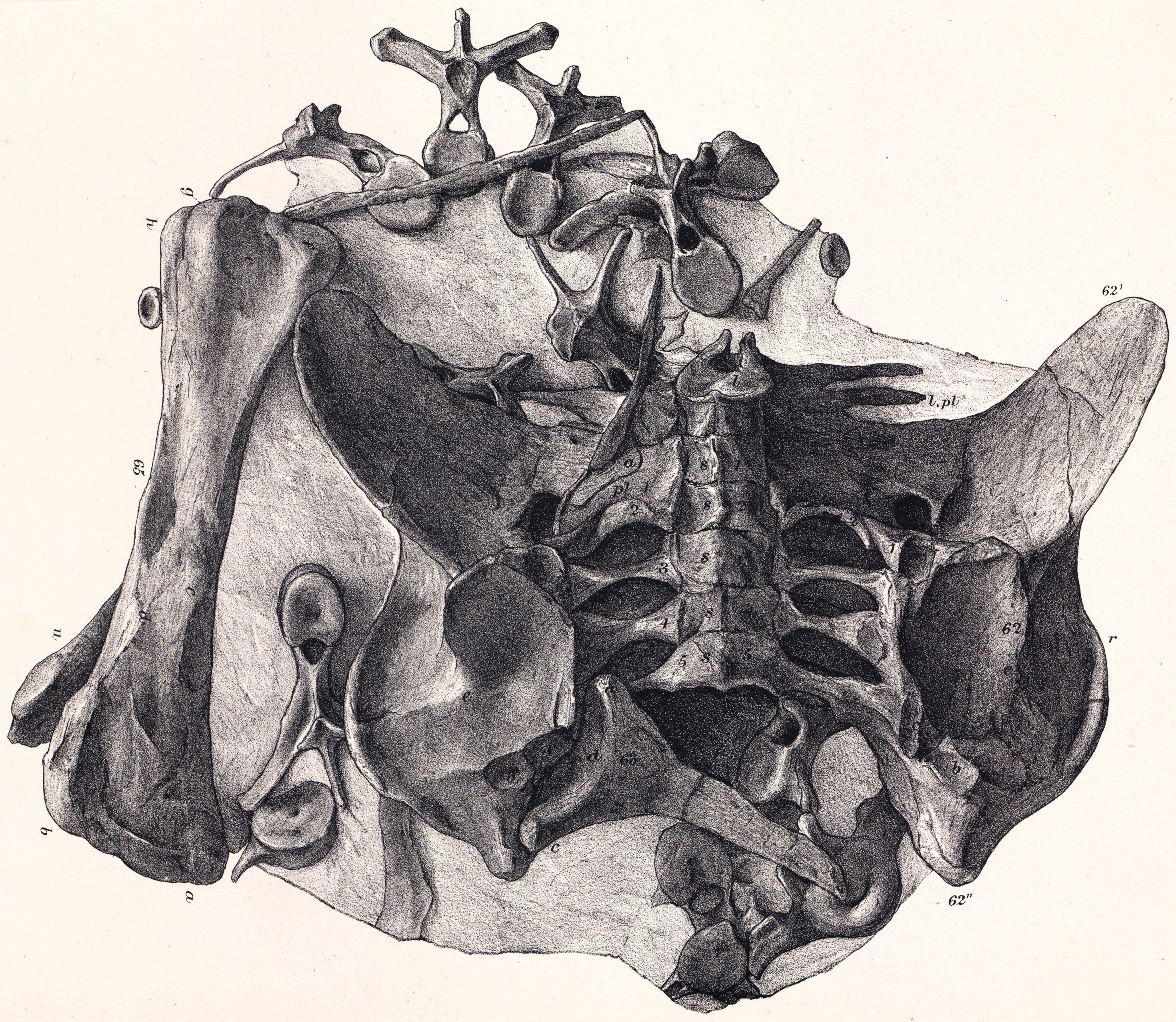
 1880
* Marsh named the
1880
* Marsh named the

 1901
* Seeley described the new species '' Omosaurus leedsi''.
1902
* Frederick Augustus Lucas described the new genus ''
1901
* Seeley described the new species '' Omosaurus leedsi''.
1902
* Frederick Augustus Lucas described the new genus ''
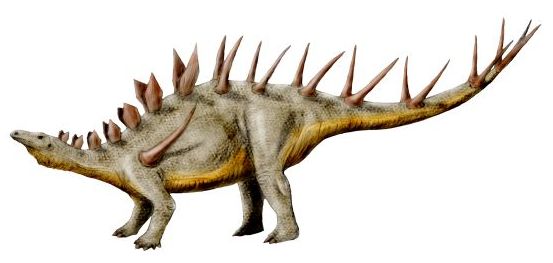 *
*
 1924
* Hennig described the distribution of ''Kentrosaurus'' bones in Quarry St at
1924
* Hennig described the distribution of ''Kentrosaurus'' bones in Quarry St at 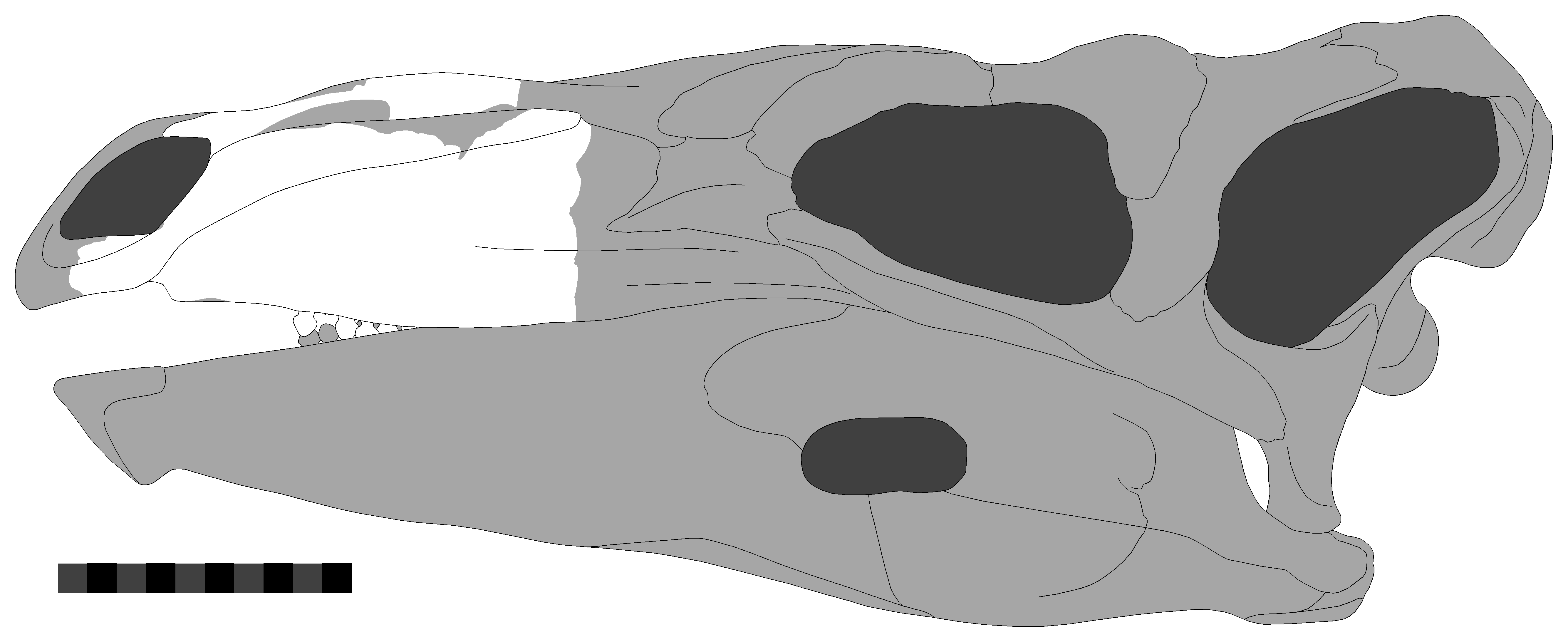 1929
* Nopcsa erected the new taxon ''
1929
* Nopcsa erected the new taxon ''
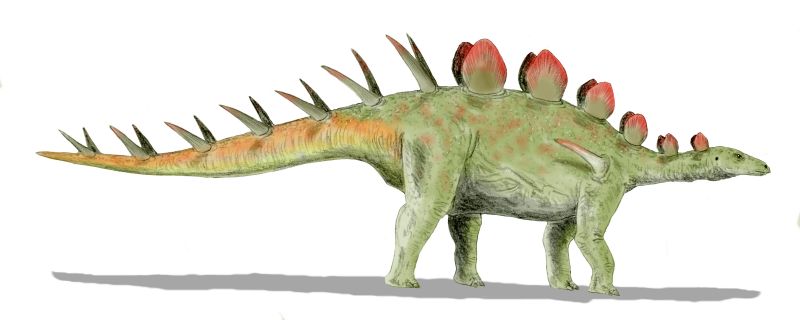 1951
* Young described the new genus and species '' Chialingosaurus kuani''.
1957
* De Lapparent and
1951
* Young described the new genus and species '' Chialingosaurus kuani''.
1957
* De Lapparent and
 1961
*
1961
*
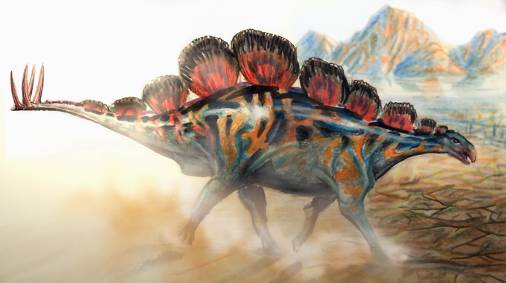 1973
*
1973
*  * James O. Farlow and others proposed that stegosaur plates were used to help regulate the animal's body temperature. Their alternating placement along its spine would allow them to dissipate its body heat by acting as forced-convection fins, the researchers argued.
1977
* Dong and others described the new genus and species '' Tuojiangosaurus multispinus''.
1978
* Robert T. Bakker proposed that contrary to the prevailing interpretation of stegosaurs as low browsers, they were actually ''high'' browsers who fed on high foliage by rearing up on their hind limbs and propping themselves up in this position with their tail.
* Walter Coombs argued based on their limb anatomy that stegosaurs were graviportal animals.
1979
* P.M. Yadagiri and Krishnan Ayyasami described the new genus and species '' Dravidosaurus blanfordi'' based on fragmentary material assumed to include a skull and plates. Since it was dated to the Coniacian it would have been the most recent known surviving stegosaur taxon. The authors also reported the existence of Maastrichtian stegosaur remains, but they did not describe these fossils.
* Michael Seidel argued that while the plates of Stegosaurus were used to help regulate its body temperature, they were actually used to absorb heat rather than lose it as argued by Farlow and others in 1976.
* James O. Farlow and others proposed that stegosaur plates were used to help regulate the animal's body temperature. Their alternating placement along its spine would allow them to dissipate its body heat by acting as forced-convection fins, the researchers argued.
1977
* Dong and others described the new genus and species '' Tuojiangosaurus multispinus''.
1978
* Robert T. Bakker proposed that contrary to the prevailing interpretation of stegosaurs as low browsers, they were actually ''high'' browsers who fed on high foliage by rearing up on their hind limbs and propping themselves up in this position with their tail.
* Walter Coombs argued based on their limb anatomy that stegosaurs were graviportal animals.
1979
* P.M. Yadagiri and Krishnan Ayyasami described the new genus and species '' Dravidosaurus blanfordi'' based on fragmentary material assumed to include a skull and plates. Since it was dated to the Coniacian it would have been the most recent known surviving stegosaur taxon. The authors also reported the existence of Maastrichtian stegosaur remains, but they did not describe these fossils.
* Michael Seidel argued that while the plates of Stegosaurus were used to help regulate its body temperature, they were actually used to absorb heat rather than lose it as argued by Farlow and others in 1976.
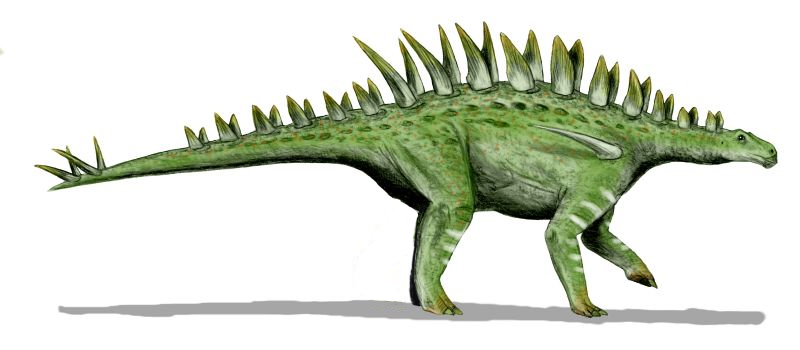 1980
*
1980
*  * Peter Malcolm Galton observed that stegosaurs were uncommon during the Cretaceous period.
1982
* Dong, Tang Zilu, and
* Peter Malcolm Galton observed that stegosaurs were uncommon during the Cretaceous period.
1982
* Dong, Tang Zilu, and 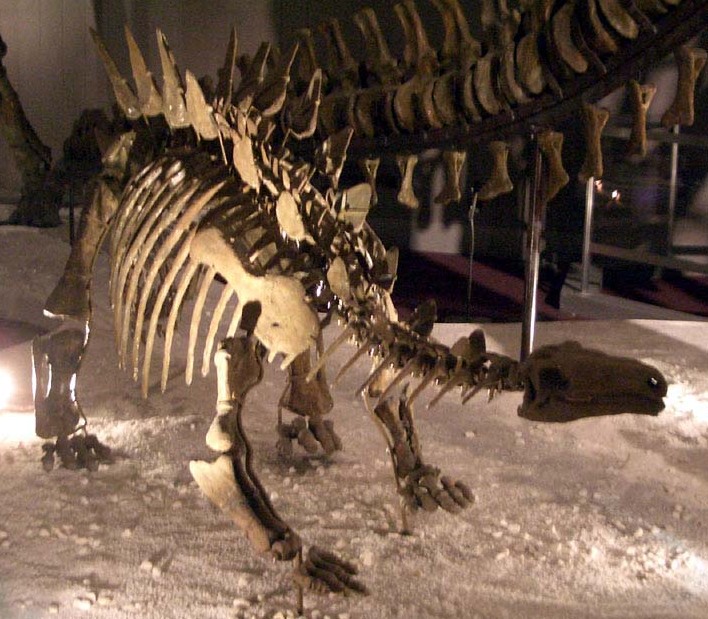 *
*  *
* 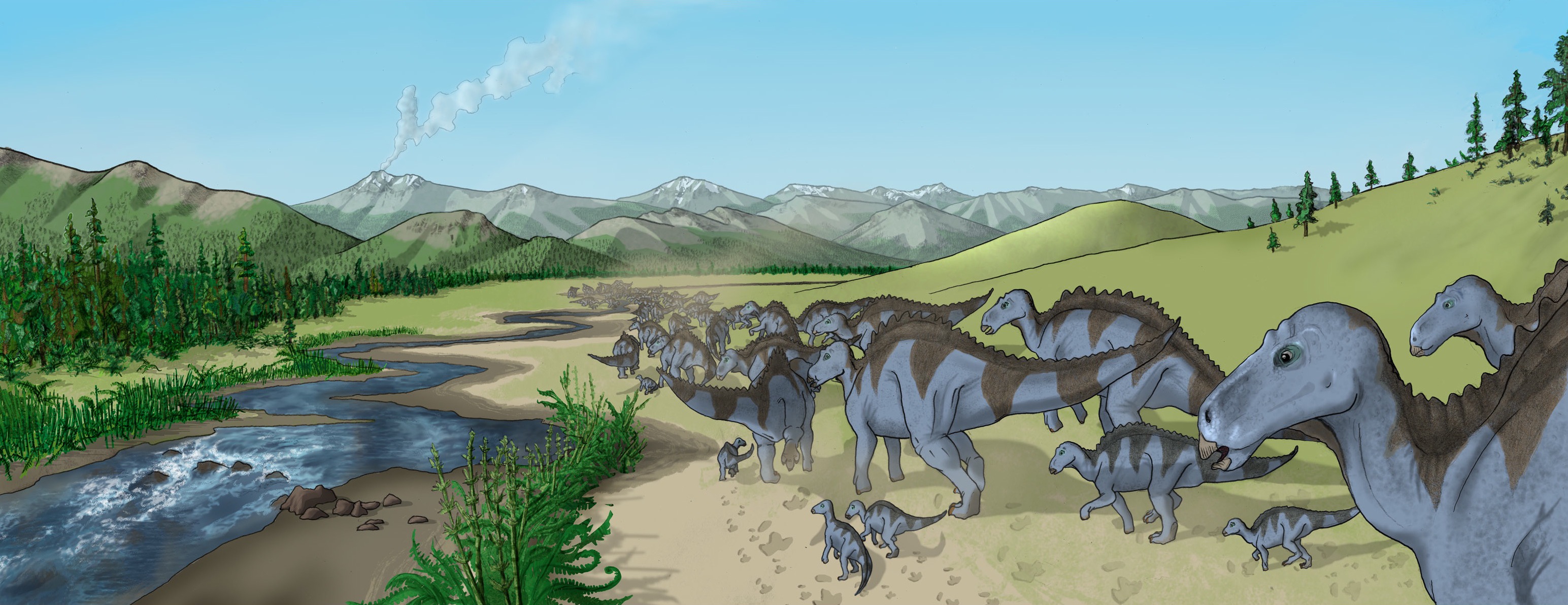 1987
* Martin Lockley disputed Leonardi's attribution of the
1987
* Martin Lockley disputed Leonardi's attribution of the
 1990
* Dong published the new genus and species name '' Monkonosaurus lawulacus'' but attributed it to Zhou.
1991
*
1990
* Dong published the new genus and species name '' Monkonosaurus lawulacus'' but attributed it to Zhou.
1991
* 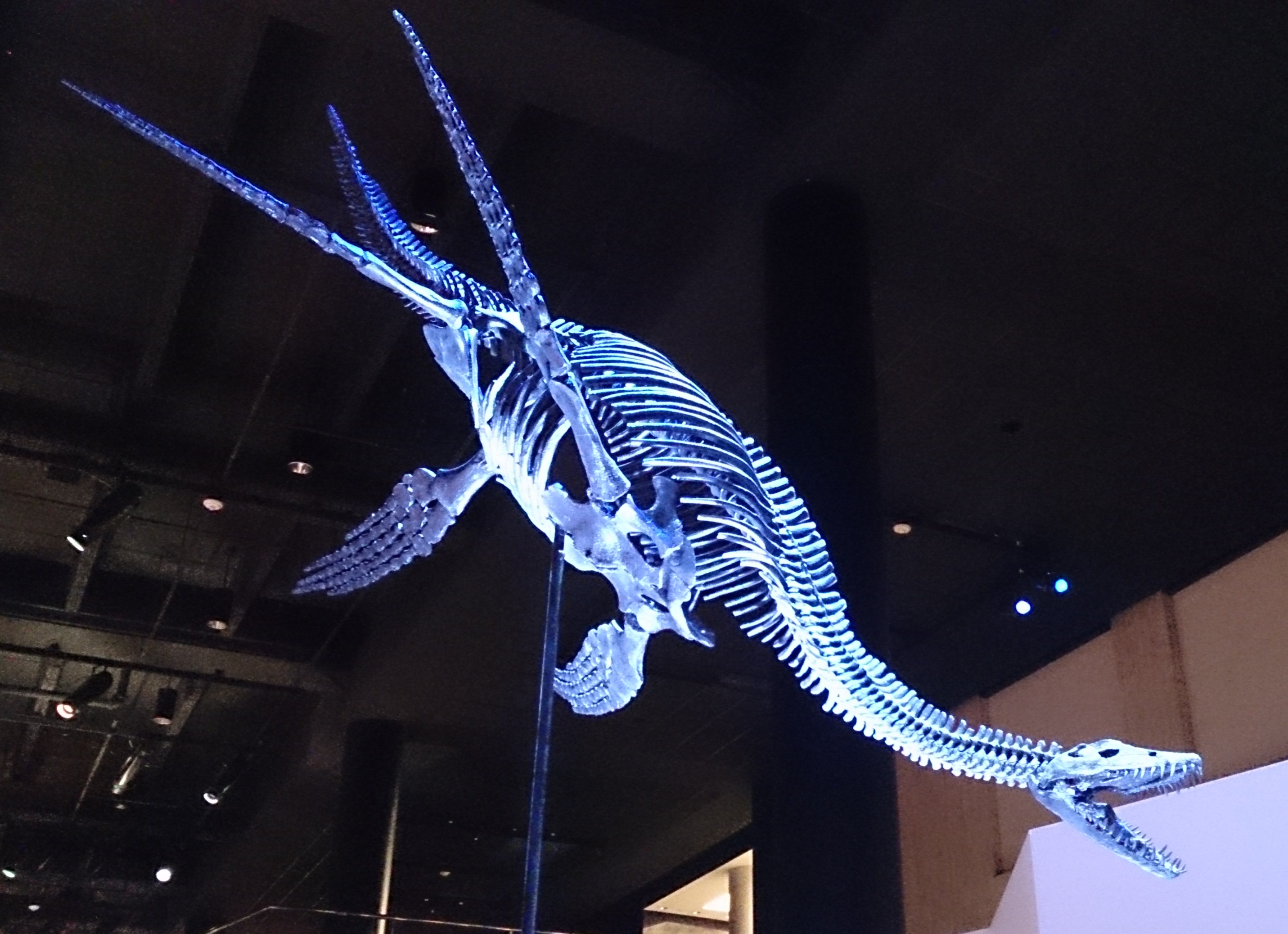 1996
* José Fernando Bonaparte reported fragmentary Early Cretaceous stegosaur remains from
1996
* José Fernando Bonaparte reported fragmentary Early Cretaceous stegosaur remains from  *
*
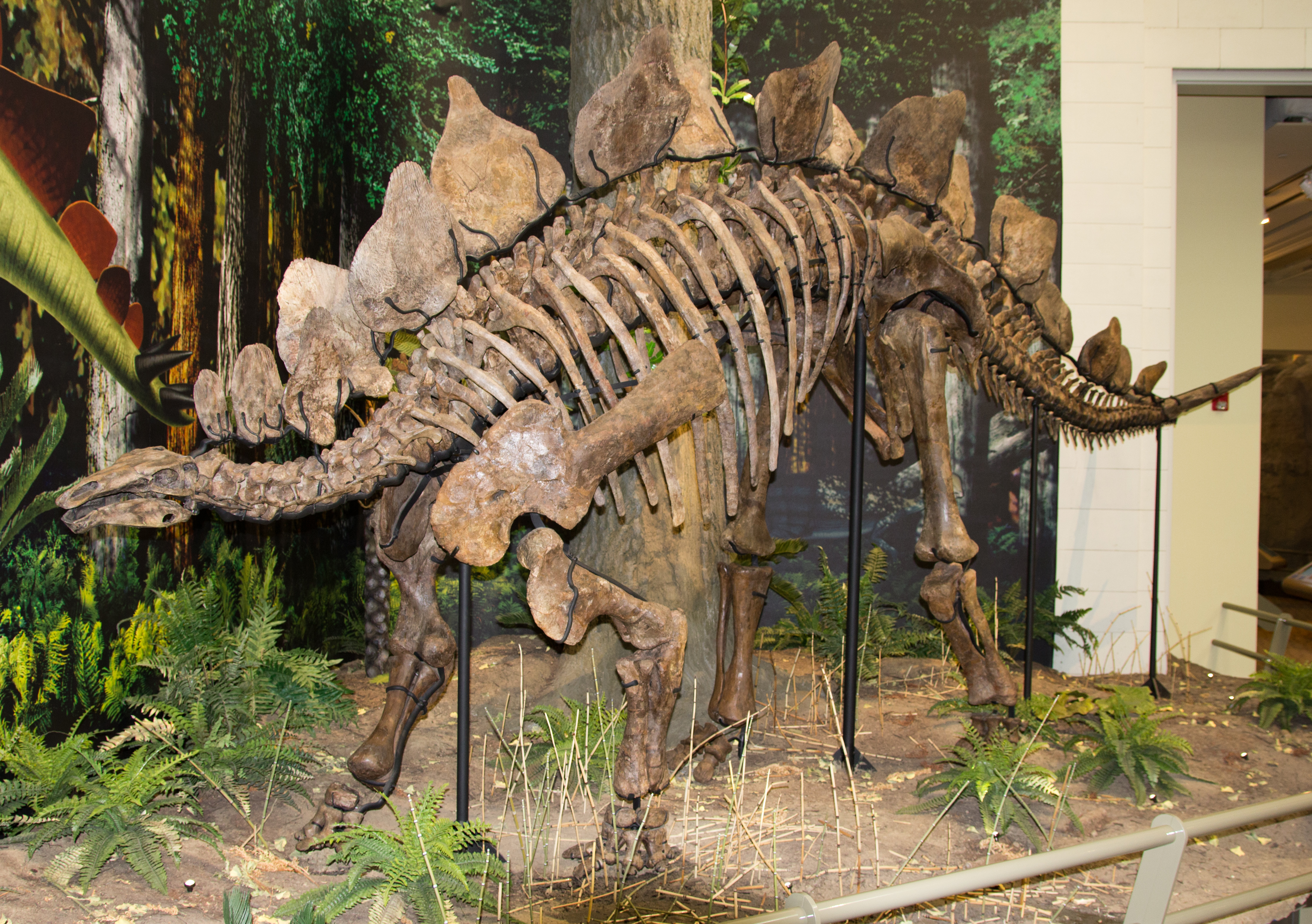 2000
* Lockley and Christian Andreas Meyer published more research on the possible Hettangian stegosaur footprints from France.
2000
* Lockley and Christian Andreas Meyer published more research on the possible Hettangian stegosaur footprints from France.
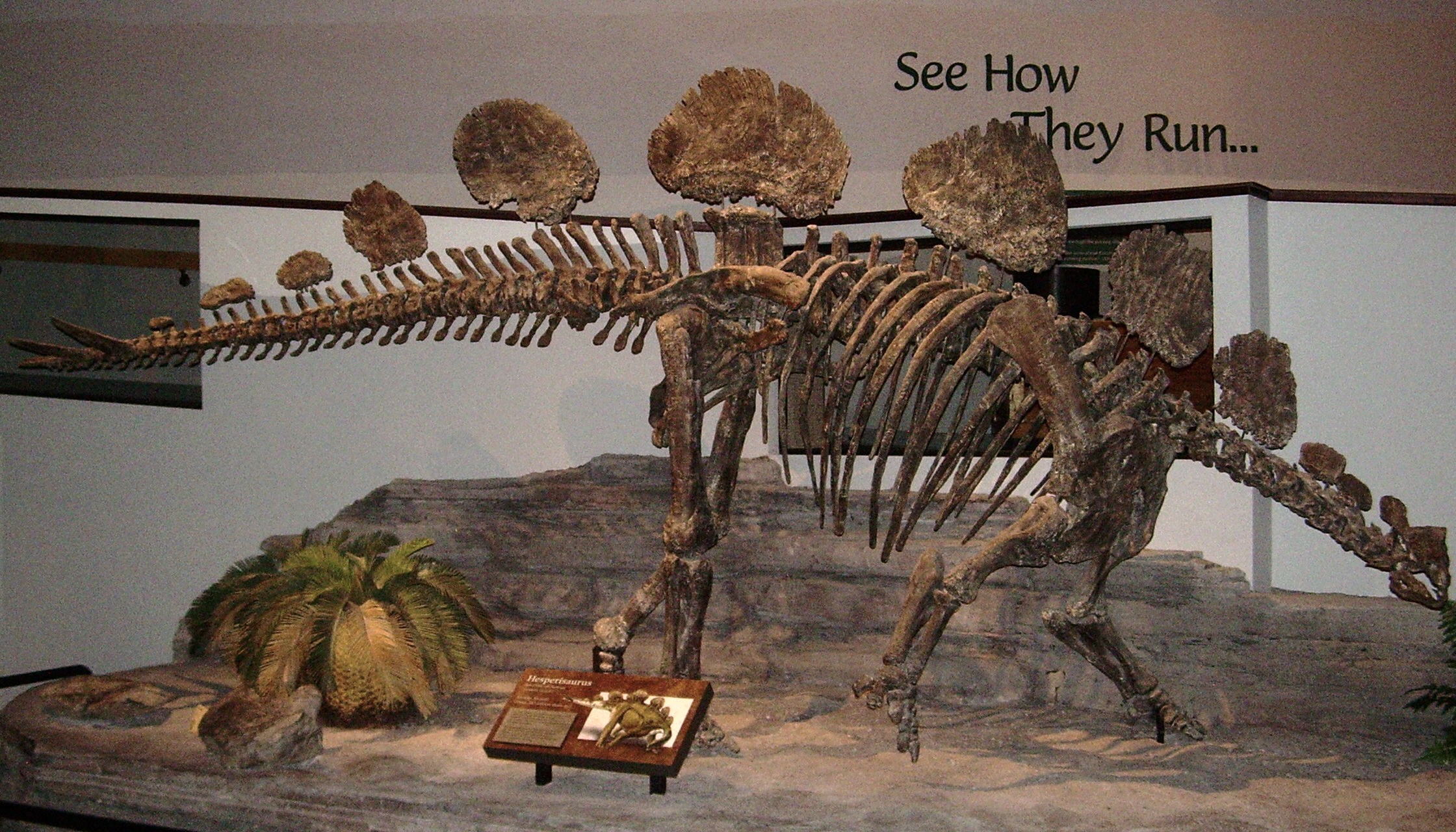 * Russell Main and others disputed the idea that Stegosaurus used its plates to help regulate its body temperature because other kinds of stegosaurs have differently shaped plates. Instead they argued that these were display structures that helped stegosaurs recognize and acquire mates of their own species. The researchers also examined the histology of stegosaur plates. They found that during development the plates and spikes grew mainly from their bases and the structure of their interiors changed significantly as the animal matured. They hypothesized that stegosaur plates evolved by greatly expanding the raised keel of bone that ran the length of the nodules of bone embedded in the skin of armored dinosaurs. They concluded that processes of growth are the main reason why stegosaur plates showed so many signs of the presence of blood vessels instead of using the blood vessels to absorb or shed heat. They also noticed that structures in other dinosaur groups and even modern mammals like
* Russell Main and others disputed the idea that Stegosaurus used its plates to help regulate its body temperature because other kinds of stegosaurs have differently shaped plates. Instead they argued that these were display structures that helped stegosaurs recognize and acquire mates of their own species. The researchers also examined the histology of stegosaur plates. They found that during development the plates and spikes grew mainly from their bases and the structure of their interiors changed significantly as the animal matured. They hypothesized that stegosaur plates evolved by greatly expanding the raised keel of bone that ran the length of the nodules of bone embedded in the skin of armored dinosaurs. They concluded that processes of growth are the main reason why stegosaur plates showed so many signs of the presence of blood vessels instead of using the blood vessels to absorb or shed heat. They also noticed that structures in other dinosaur groups and even modern mammals like 
 This timeline of stegosaur research is a chronological listing of events in the
This timeline of stegosaur research is a chronological listing of events in the history
History (derived ) is the systematic study and the documentation of the human activity. The time period of event before the invention of writing systems is considered prehistory. "History" is an umbrella term comprising past events as well ...
of paleontology
Paleontology (), also spelled palaeontology or palæontology, is the scientific study of life that existed prior to, and sometimes including, the start of the Holocene epoch (roughly 11,700 years before present). It includes the study of fossi ...
focused on the stegosaurs, the iconic plate-backed, spike-tailed herbivorous
A herbivore is an animal anatomically and physiologically adapted to eating plant material, for example foliage or marine algae, for the main component of its diet. As a result of their plant diet, herbivorous animals typically have mouthpar ...
eurypod dinosaurs that predominated during the Jurassic
The Jurassic ( ) is a geologic period and stratigraphic system that spanned from the end of the Triassic Period million years ago (Mya) to the beginning of the Cretaceous Period, approximately Mya. The Jurassic constitutes the middle period of ...
period. The first scientifically documented stegosaur remains were recovered from Early Cretaceous strata in England
England is a country that is part of the United Kingdom. It shares land borders with Wales to its west and Scotland to its north. The Irish Sea lies northwest and the Celtic Sea to the southwest. It is separated from continental Europe b ...
during the mid- 19th century. However, they would not be recognized as a distinct group of dinosaurs until Othniel Charles Marsh
Othniel Charles Marsh (October 29, 1831 – March 18, 1899) was an American professor of Paleontology in Yale College and President of the National Academy of Sciences. He was one of the preeminent scientists in the field of paleontology. Among ...
described the new genus
Genus ( plural genera ) is a taxonomic rank used in the biological classification of living and fossil organisms as well as viruses. In the hierarchy of biological classification, genus comes above species and below family. In binomial nom ...
and species ''Stegosaurus armatus
''Stegosaurus'' (; ) is a genus of herbivorous, four-legged, armored dinosaur from the Late Jurassic, characterized by the distinctive kite-shaped upright plates along their backs and spikes on their tails. Fossils of the genus have been fou ...
'' in 1877
Events
January–March
* January 1 – Queen Victoria is proclaimed ''Empress of India'' by the ''Royal Titles Act 1876'', introduced by Benjamin Disraeli, the Prime Minister of the United Kingdom .
* January 8 – Great ...
, which he regarded as the founding member of the Stegosauria. This new taxon originally included all armored dinosaurs. It was not until 1927
Events January
* January 1 – The British Broadcasting ''Company'' becomes the British Broadcasting ''Corporation'', when its Royal Charter of incorporation takes effect. John Reith becomes the first Director-General.
* January 7
...
that Alfred Sherwood Romer
Alfred Sherwood Romer (December 28, 1894 – November 5, 1973) was an American paleontologist and biologist and a specialist in vertebrate evolution.
Biography
Alfred Romer was born in White Plains, New York, the son of Harry Houston Romer an ...
implemented the modern use of the name Stegosauria as specifically pertaining to the plate-backed and spike-tailed dinosaurs.
From the time of their earliest description, the chief mystery surrounding stegosaurs was the function of their distinctive back plates. Marsh originally interpreted them as being plates of armor that would protect against predators. In 1910
Events
January
* January 13 – The first public radio broadcast takes place; live performances of the operas '' Cavalleria rusticana'' and ''Pagliacci'' are sent out over the airwaves, from the Metropolitan Opera House in New York C ...
, Richard Swann Lull
Richard Swann Lull (November 6, 1867 – April 22, 1957) was an American paleontologist and Sterling Professor at Yale University who is largely remembered now for championing a non-Darwinian view of evolution, whereby mutation(s) could unl ...
would agree with this hypothesis. Charles Whitney Gilmore
Charles Whitney Gilmore (March 11, 1874 – September 27, 1945) was an American paleontologist who gained renown in the early 20th century for his work on vertebrate fossils during his career at the United States National Museum (now the N ...
disagreed in 1914
This year saw the beginning of what became known as World War I, after Archduke Franz Ferdinand of Austria, heir to the Austrian throne was Assassination of Archduke Franz Ferdinand, assassinated by Serbian nationalist Gavrilo Princip. It als ...
and argued that the only protection a stegosaur could gain from its plates was to appear intimidatingly larger to potential predators. Nearly forty years later, Davitashvili Davitashvili (Georgian: დავითაშვილი) is a Georgian surname that may refer to
* Bagration-Davitashvili, Georgian noble family
* Alexander Davitashvili (born 1974), Georgian judoka
*Eugenia Davitashvili (1949–2015), Russian fai ...
argued that the plates were too fragile to be used for defense and instead used to attract mates and signal the stegosaur's rank in a social hierarchy.
In the late 1970s
File:1970s decade montage.jpg, Clockwise from top left: U.S. President Richard Nixon doing the V for Victory sign after his resignation from office following the Watergate scandal in 1974; The United States was still involved in the Vietnam War ...
, James O. Farlow and others would propose that the thin, blood vessel
The blood vessels are the components of the circulatory system that transport blood throughout the human body. These vessels transport blood cells, nutrients, and oxygen to the tissues of the body. They also take waste and carbon dioxide away ...
-rich plates helped absorb or lose body heat, depending on the animal's own physiological requirements. This hypothesis was put forth in a broader context of scientists considering the possibility that dinosaurs may have maintained body temperatures and activity levels similar to those of modern birds and mammals
Mammals () are a group of vertebrate animals constituting the class Mammalia (), characterized by the presence of mammary glands which in females produce milk for feeding (nursing) their young, a neocortex (a region of the brain), fur o ...
, in which case the plates may have served primarily to shed heat rather than gain it. In the late 1980s
File:1980s replacement montage02.PNG, 420px, From left, clockwise: The first Space Shuttle, ''Columbia'', lifts off in 1981; US president Ronald Reagan and Soviet leader Mikhail Gorbachev ease tensions between the two superpowers, leading to the ...
Buffrenil and others revived the idea that stegosaur plates were display structures, an interpretation that would continue to find favor from researchers like Main and colleagues into the 21st century
The 21st (twenty-first) century is the current century in the ''Anno Domini'' era or Common Era, under the Gregorian calendar. It began on 1 January 2001 ( MMI) and will end on 31 December 2100 ( MMC).
Marking the beginning of the 21st centur ...
.
19th century


1840s
1841 *Gideon Mantell
Gideon Algernon Mantell MRCS FRS (3 February 1790 – 10 November 1852) was a British obstetrician, geologist and palaeontologist. His attempts to reconstruct the structure and life of ''Iguanodon'' began the scientific study of dinosaurs: in ...
described the new genus
Genus ( plural genera ) is a taxonomic rank used in the biological classification of living and fossil organisms as well as viruses. In the hierarchy of biological classification, genus comes above species and below family. In binomial nom ...
and species
In biology, a species is the basic unit of classification and a taxonomic rank of an organism, as well as a unit of biodiversity. A species is often defined as the largest group of organisms in which any two individuals of the appropriate s ...
'' Regnosaurus northamptoni''.
1870s
 1874
*
1874
* Harry Govier Seeley
Harry Govier Seeley (18 February 1839 – 8 January 1909) was a British paleontologist.
Early life
Seeley was born in London on 18 February 1839, the second son of Richard Hovill Seeley, a goldsmith, and his second wife Mary Govier. When his fat ...
described the new genus and species '' Craterosaurus pottonensis''.
1875
* Sir Richard Owen
Sir Richard Owen (20 July 1804 – 18 December 1892) was an English biologist, comparative anatomist and paleontologist. Owen is generally considered to have been an outstanding naturalist with a remarkable gift for interpreting fossils.
Ow ...
described the new genus and species '' Omosaurus armatus''.
1876
* Owen described the new species '' Anthodon serrarius''.
1877
* Othniel Charles Marsh
Othniel Charles Marsh (October 29, 1831 – March 18, 1899) was an American professor of Paleontology in Yale College and President of the National Academy of Sciences. He was one of the preeminent scientists in the field of paleontology. Among ...
described the new genus and species ''Stegosaurus armatus
''Stegosaurus'' (; ) is a genus of herbivorous, four-legged, armored dinosaur from the Late Jurassic, characterized by the distinctive kite-shaped upright plates along their backs and spikes on their tails. Fossils of the genus have been fou ...
''.
* Marsh named the Stegosauria.
* Owen described the new species '' Omosaurus hastiger''.
1878
* Edward Drinker Cope described the new genus and species '' Hypsirhophus discurus''.
1879
* Cope described the new species '' Hypsirhophus seeleyanus''.
1880s

 1880
* Marsh named the
1880
* Marsh named the Stegosauridae
Stegosauridae is a family of thyreophoran dinosaurs (armoured dinosaurs) within the suborder Stegosauria. The clade is defined as all species of dinosaurs more closely related to ''Stegosaurus'' than '' Huayangosaurus''.David B. Weishampel, Pete ...
.
* Marsh interpreted the plates of Stegosaurus as an armored covering and its spines as natural weapons.
* Marsh described the new species '' Stegosaurus affinis''.
1881
* Marsh described the new genus and species '' Diracodon laticeps''.
1884
* Hulke reported a Cretaceous stegosaur pubis from England.
1887
* Hulke described the new species '' Omosaurus durobrivensis''.
* Marsh described the new species '' Stegosaurus sulcatus''.
* Marsh described the new species '' Stegosaurus duplex''. Marsh described the new species ''Stegosaurus stenops
''Stegosaurus'' (; ) is a genus of herbivorous, four-legged, armored dinosaur from the Late Jurassic, characterized by the distinctive kite-shaped upright plates along their backs and spikes on their tails. Fossils of the genus have been foun ...
''.
1890s
1891 * Marsh provided an illustrated description of Stegosaurus ungulatus, with a row of erect plates running along the centre of its back. 1893 *Harry Govier Seeley
Harry Govier Seeley (18 February 1839 – 8 January 1909) was a British paleontologist.
Early life
Seeley was born in London on 18 February 1839, the second son of Richard Hovill Seeley, a goldsmith, and his second wife Mary Govier. When his fat ...
described the new species '' Omosaurus phillipsi''.
20th century
1900s

 1901
* Seeley described the new species '' Omosaurus leedsi''.
1902
* Frederick Augustus Lucas described the new genus ''
1901
* Seeley described the new species '' Omosaurus leedsi''.
1902
* Frederick Augustus Lucas described the new genus ''Dacentrurus
''Dacentrurus'' (meaning "tail full of points"), originally known as ''Omosaurus'', is a genus of stegosaurian dinosaur from the Late Jurassic to Early Cretaceous (154 - 140 mya) of Europe. Its type species, ''Omosaurus armatus'', was named in 18 ...
'' to house the species ''Omosaurus armatus''.
1905
* Loomis argued that the plates adorning the backs of stegosaurs were maladaptive traits that sapped their vigor and signaled their impending extinction. Similar arguments would later be extended to the extinction of the dinosaurs overall by Woodward in 1910.
1910s
1910 * Von Huene described the species '' Omosaurus vetustus''. *Richard Swann Lull
Richard Swann Lull (November 6, 1867 – April 22, 1957) was an American paleontologist and Sterling Professor at Yale University who is largely remembered now for championing a non-Darwinian view of evolution, whereby mutation(s) could unl ...
followed Marsh's interpretation of ''Stegosaurus'' plates as armor and its tail spines as "defensive" weapons.
1911
* Franz Nopcsa Franz may refer to:
People
* Franz (given name)
* Franz (surname)
Places
* Franz (crater), a lunar crater
* Franz, Ontario, a railway junction and unorganized town in Canada
* Franz Lake, in the state of Washington, United States – see ...
described the new species '' Omosaurus lennieri''. He also described the new species '' Stegosaurus priscus''.
1912
* Robert Broom
Robert Broom FRS FRSE (30 November 1866 6 April 1951) was a British- South African doctor and palaeontologist. He qualified as a medical practitioner in 1895 and received his DSc in 1905 from the University of Glasgow.
From 1903 to 1910, he ...
described the new species '' Palaeoscincus africanus''.
1914
 *
* Charles Whitney Gilmore
Charles Whitney Gilmore (March 11, 1874 – September 27, 1945) was an American paleontologist who gained renown in the early 20th century for his work on vertebrate fossils during his career at the United States National Museum (now the N ...
described '' Stegosaurus longispinus''. He agreed with previous workers that ''Stegosaurus'' used its spines to protect itself, but dismissed the idea that its plates functioned as armor. However, Gilmore conceded that the plates may have helped protect it by making it appear intimidatingly large to predators.
1915
* Edwin Hennig
Edwin Hennig (27 April 1882 – 12 November 1977) was a German paleontologist.
Career
Edwin Hennig was one of five children of a merchant who died when Hennig was 10 years old. Starting in 1902, Hennig studied natural sciences, anthropolog ...
described the new genus and species '' Kentrosaurus aethiopicus''.
1916
* Nopcsa renamed ''Kentrosaurus'' into '' Doryphorosaurus''.
* Hennig renamed ''Kentrosaurus'' into '' Kentrurosaurus''. Both new names were unnecessary.
1920s
 1924
* Hennig described the distribution of ''Kentrosaurus'' bones in Quarry St at
1924
* Hennig described the distribution of ''Kentrosaurus'' bones in Quarry St at Tendaguru
The Tendaguru Formation, or Tendaguru Beds are a highly fossiliferous formation and Lagerstätte located in the Lindi Region of southeastern Tanzania. The formation represents the oldest sedimentary unit of the Mandawa Basin, overlying Neoprotero ...
, Tanzania
Tanzania (; ), officially the United Republic of Tanzania ( sw, Jamhuri ya Muungano wa Tanzania), is a country in East Africa within the African Great Lakes region. It borders Uganda to the north; Kenya to the northeast; Comoro Islands ...
. He observed that at one place in the quarry multiple sacra were found near each other, while another area of the quarry contained limb bones, and yet another preserved vertebrae.
1927
* Alfred Sherwood Romer
Alfred Sherwood Romer (December 28, 1894 – November 5, 1973) was an American paleontologist and biologist and a specialist in vertebrate evolution.
Biography
Alfred Romer was born in White Plains, New York, the son of Harry Houston Romer an ...
observed that the anatomy of the stegosaur pelvis and hindlimb as well as their primarily Jurassic
The Jurassic ( ) is a geologic period and stratigraphic system that spanned from the end of the Triassic Period million years ago (Mya) to the beginning of the Cretaceous Period, approximately Mya. The Jurassic constitutes the middle period of ...
age distinguished them from the mainly Cretaceous
The Cretaceous ( ) is a geological period that lasted from about 145 to 66 million years ago (Mya). It is the third and final period of the Mesozoic Era, as well as the longest. At around 79 million years, it is the longest geological period of ...
ankylosaurs. As the Stegosauria originally included all armored dinosaurs, Romer's distinction marked the beginning of the modern use of the name to refer to the plate-backed and spike-tailed dinosaurs.
 1929
* Nopcsa erected the new taxon ''
1929
* Nopcsa erected the new taxon ''Paranthodon
''Paranthodon'' ( ) is a genus of stegosaurian dinosaur that lived in what is now South Africa during the Early Cretaceous, between 139 and 131 million years ago. Discovered in 1845, it was one of the first stegosaurians found. Its only rem ...
oweni'' for the same material as ''Palaeoscincus africanus''.
1940s
1944 *Yang Zhongjian
Yang Zhongjian, also Yang Chung-chien (; 1 June 1897 – 15 January 1979), courtesy name Keqiang (), also known as C.C. (Chung Chien) Young, was a Chinese paleontologist and zoologist. He was one of China's foremost vertebrate paleontologists. H ...
("C. C. Young") reported indeterminate stegosaur remains from the Kuangyuan Series. They are among the oldest known stegosaur bones.
1950s
 1951
* Young described the new genus and species '' Chialingosaurus kuani''.
1957
* De Lapparent and
1951
* Young described the new genus and species '' Chialingosaurus kuani''.
1957
* De Lapparent and Georges Zbyszewski Georges may refer to:
Places
* Georges River, New South Wales, Australia
* Georges Quay (Dublin)
*Georges Township, Fayette County, Pennsylvania
Other uses
*Georges (name)
* ''Georges'' (novel), a novel by Alexandre Dumas
* "Georges" (song), a 19 ...
described the new species '' Astrodon pusillus''.
* De Lapparent and Zbyszewski reported a possible stegosaur egg associated with a ''Dacentrurus'' skeleton from Portugal
Portugal, officially the Portuguese Republic ( pt, República Portuguesa, links=yes ), is a country whose mainland is located on the Iberian Peninsula of Southwestern Europe, and whose territory also includes the Atlantic archipelagos of ...
. However, as the mysterious object lacks a shell, it is now considered to be a nodule of geologic rather than biological origin.
* Hoffstetter described the new genus '' Lexovisaurus'' to house the species ''Omosaurus durobrivensis''.
1960s
 1961
*
1961
* Davitashvili Davitashvili (Georgian: დავითაშვილი) is a Georgian surname that may refer to
* Bagration-Davitashvili, Georgian noble family
* Alexander Davitashvili (born 1974), Georgian judoka
*Eugenia Davitashvili (1949–2015), Russian fai ...
marshalled further evidence against the hypothesis that stegosaur plates functioned as armor. He observed that the plates would be ineffective as armor because they were thin, only shallowly embedded in the skin, and left most of the animal's sides exposed. He felt they were used as display structures to attract mates and signal an individuals position within a social hierarchy
Social stratification refers to a society's categorization of its people into groups based on socioeconomic factors like wealth, income, race, education, ethnicity, gender, occupation, social status, or derived power (social and political). As ...
.
1963
* Nicholas Hotton III
Nicholas Hotton III (January 28, 1921 – November 29, 1999) was an American paleontologist renowned as an expert on dinosaurs and reptiles.
Early life and education
Hotton was born in Sault Ste. Marie, Michigan and was educated at the Univers ...
proposed that stegosaur plates could be moved by flexing muscles in the skin, allowing the plates to function defensively, discouraging attacks from either above or the side depending on the plates' position at any given time.
1966
* Dorothy Hill
Dorothy Hill, (10 September 1907 – 23 April 1997) was an Australian geologist and palaeontologist, the first female professor at an Australian university, and the first female president of the Australian Academy of Science.
Education
Doroth ...
and others reported a possible Early Jurassic
The Early Jurassic Epoch (geology), Epoch (in chronostratigraphy corresponding to the Lower Jurassic series (stratigraphy), Series) is the earliest of three epochs of the Jurassic Period. The Early Jurassic starts immediately after the Triassic-J ...
stegosaur footprint from Australia.
* John Ostrom
John Harold Ostrom (February 18, 1928 – July 16, 2005) was an American paleontologist who revolutionized modern understanding of dinosaurs in the 1960s.
As first proposed by Thomas Henry Huxley in the 1860s, Ostrom showed that dinosaurs were ...
and John Stanton McIntosh
John is a common English name and surname:
* John (given name)
* John (surname)
John may also refer to:
New Testament
Works
* Gospel of John, a title often shortened to John
* First Epistle of John, often shortened to 1 John
* Second ...
reported that ''Stegosaurus'' remains were unusually common in Quarry 13 at Como Bluff
Como Bluff is a long ridge extending east–west, located between the towns of Rock River and Medicine Bow, Wyoming. The ridge is an anticline, formed as a result of compressional geological folding. Three geological formations, the Sundance, th ...
, Wyoming
Wyoming () is a state in the Mountain West subregion of the Western United States. It is bordered by Montana to the north and northwest, South Dakota and Nebraska to the east, Idaho to the west, Utah to the southwest, and Colorado to the s ...
.
1970s
 1973
*
1973
* Dong Zhiming
Dong Zhiming (Chinese: 董枝明, Pinyin: ''Dǒng Zhimíng''; born January 1937) is a Chinese vertebrate paleontologist formerly employed at the Institute of Vertebrate Paleontology and Paleoanthropology (IVPP) in Beijing. He began working at th ...
described the new genus and species '' Wuerhosaurus homheni''.
1976
 * James O. Farlow and others proposed that stegosaur plates were used to help regulate the animal's body temperature. Their alternating placement along its spine would allow them to dissipate its body heat by acting as forced-convection fins, the researchers argued.
1977
* Dong and others described the new genus and species '' Tuojiangosaurus multispinus''.
1978
* Robert T. Bakker proposed that contrary to the prevailing interpretation of stegosaurs as low browsers, they were actually ''high'' browsers who fed on high foliage by rearing up on their hind limbs and propping themselves up in this position with their tail.
* Walter Coombs argued based on their limb anatomy that stegosaurs were graviportal animals.
1979
* P.M. Yadagiri and Krishnan Ayyasami described the new genus and species '' Dravidosaurus blanfordi'' based on fragmentary material assumed to include a skull and plates. Since it was dated to the Coniacian it would have been the most recent known surviving stegosaur taxon. The authors also reported the existence of Maastrichtian stegosaur remains, but they did not describe these fossils.
* Michael Seidel argued that while the plates of Stegosaurus were used to help regulate its body temperature, they were actually used to absorb heat rather than lose it as argued by Farlow and others in 1976.
* James O. Farlow and others proposed that stegosaur plates were used to help regulate the animal's body temperature. Their alternating placement along its spine would allow them to dissipate its body heat by acting as forced-convection fins, the researchers argued.
1977
* Dong and others described the new genus and species '' Tuojiangosaurus multispinus''.
1978
* Robert T. Bakker proposed that contrary to the prevailing interpretation of stegosaurs as low browsers, they were actually ''high'' browsers who fed on high foliage by rearing up on their hind limbs and propping themselves up in this position with their tail.
* Walter Coombs argued based on their limb anatomy that stegosaurs were graviportal animals.
1979
* P.M. Yadagiri and Krishnan Ayyasami described the new genus and species '' Dravidosaurus blanfordi'' based on fragmentary material assumed to include a skull and plates. Since it was dated to the Coniacian it would have been the most recent known surviving stegosaur taxon. The authors also reported the existence of Maastrichtian stegosaur remains, but they did not describe these fossils.
* Michael Seidel argued that while the plates of Stegosaurus were used to help regulate its body temperature, they were actually used to absorb heat rather than lose it as argued by Farlow and others in 1976.
1980s
 1980
*
1980
* Dale Russell
Dale Alan Russell (27 December 1937 – 21 December 2019)
was an American-Canadian geologist and palaeontologist. Throughout his career Russell worked as the Curator of Fossil Vertebrates at the Canadian Museum of Nature, Research Professor a ...
and others reconstructed the ancient environment of Tendaguru, Tanzania as a warm coastal area that sometimes experienced droughts
A drought is defined as drier than normal conditions.Douville, H., K. Raghavan, J. Renwick, R.P. Allan, P.A. Arias, M. Barlow, R. Cerezo-Mota, A. Cherchi, T.Y. Gan, J. Gergis, D. Jiang, A. Khan, W. Pokam Mba, D. Rosenfeld, J. Tierney, an ...
. The stegosaur ''Kentrosaurus'' was present there, although not especially common. Its local fossil record consists largely of "medium-sized" members of the species.
1981
 * Peter Malcolm Galton observed that stegosaurs were uncommon during the Cretaceous period.
1982
* Dong, Tang Zilu, and
* Peter Malcolm Galton observed that stegosaurs were uncommon during the Cretaceous period.
1982
* Dong, Tang Zilu, and Zhou Shiwu Zhou may refer to:
Chinese history
* King Zhou of Shang () (1105 BC–1046 BC), the last king of the Shang dynasty
* Predynastic Zhou (), 11th-century BC precursor to the Zhou dynasty
* Zhou dynasty () (1046 BC–256 BC), a dynasty of China
** West ...
described the new genus and species ''Huayangosaurus taibaii
''Huayangosaurus'' is a genus of stegosaurian dinosaur from the Middle Jurassic of China. The name derives from "Huayang" (華陽), an alternate name for Sichuan (the province where it was discovered), and "saurus", meaning "lizard". It lived du ...
'' as well as the Huayangosauridae.
* Nikolaï Spassov argued that the plates of stegosaurs were used as display structures in competitions over mates. Their orientation made them best suited to being viewed from the side.
* Galton studied the growth and development of ''Stegosaurus''.
* Galton found that ''Kentrosaurus'' came in two varieties, one with an extra sacral rib. He speculated that this morph with the extra sacral rib was the female and the other morph lacking the rib was male.
 *
* Ralph Molnar
Ralph E. Molnar is a paleontologist who had been Curator of Mammals at the Queensland Museum and more recently associated with the Museum of Northern Arizona. He is also a research associate at the Texas natural Science Centre. He co-authored descr ...
published more research on the possible Early Jurassic stegosaur track from Australia.
* Jacques Jenny and Jean-Arsène Jossen reported a possible Pliensbachian
The Pliensbachian is an age (geology), age of the geologic timescale and stage (stratigraphy), stage in the stratigraphic column. It is part of the Early Jurassic, Early or Lower Jurassic epoch (geology), Epoch or series (stratigraphy), Series an ...
stegosaur trackway from Morocco
Morocco (),, ) officially the Kingdom of Morocco, is the westernmost country in the Maghreb region of North Africa. It overlooks the Mediterranean Sea to the north and the Atlantic Ocean to the west, and has land borders with Algeria t ...
.
1983
* Dong, Zhou and Zhang Yihong described the new genus and species '' Chungkingosaurus jiangbeiensis''.
* Galton and Harry Philip Powell reported stegosaur armor and vertebrae from the Early Bajocian
In the geologic timescale, the Bajocian is an age and stage in the Middle Jurassic. It lasted from approximately 170.3 Ma to around 168.3 Ma (million years ago). The Bajocian Age succeeds the Aalenian Age and precedes the Bathonian Age.
Stra ...
of England. These are among the oldest known stegosaur bones.
*Comic Artist Gary Larson
Gary Larson (born August 14, 1950) is an American cartoonist, environmentalist, and former musician. He is the creator of ''The Far Side'', a single-panel cartoon series that was syndicated internationally to more than 1,900 newspapers for fif ...
humorously suggests the tail spikes on a stegosaur be named the Thagomizer
A thagomizer () is the distinctive arrangement of four spikes on the tails of stegosaurine dinosaurs. These spikes are believed to have been a defensive measure against predators.Carpenter, K., Sanders, F., McWhinney, L., and Wood, L. 2005. Ev ...
.
1984
* Giuseppe Leonardi attributed Early Cretaceous footprints of the ichnogenus ''Caririchnium
''Caririchnium'' is an ichnogenus of ornithopod dinosaur footprint, belonging to either derived iguanodonts or basal hadrosauroids. It includes the species ''Caririchnium lotus'' from Lower Cretaceous Jiaguan Formation and ''C''. ''protohadrosau ...
'' to stegosaurs.
* Zhou observed that the Bathonian
In the geologic timescale the Bathonian is an age and stage of the Middle Jurassic. It lasted from approximately 168.3 Ma to around 166.1 Ma (million years ago). The Bathonian Age succeeds the Bajocian Age and precedes the Callovian Age.
Str ...
to Callovian
In the geologic timescale, the Callovian is an age and stage in the Middle Jurassic, lasting between 166.1 ± 4.0 Ma (million years ago) and 163.5 ± 4.0 Ma. It is the last stage of the Middle Jurassic, following the Bathonian and preceding the ...
''Huayangosaurus'' was among the oldest known stegosaur fossils.
* Vivian de Buffrénil and others studied the histology
Histology,
also known as microscopic anatomy or microanatomy, is the branch of biology which studies the microscopic anatomy of biological tissues. Histology is the microscopic counterpart to gross anatomy, which looks at larger structures vi ...
of a ''Stegosaurus'' plate. They concluded that since the Sharpey's fibers
Sharpey's fibres (bone fibres, or perforating fibres) are a matrix of connective tissue consisting of bundles of strong predominantly type I collagen fibres connecting periosteum to bone. They are part of the outer fibrous layer of periosteum, en ...
that anchored it within the animal's skin were symmetrical it could not be moved. They also argued that there was no physical evidence in the anatomy of the plate to suggest that it was covered by horn in life. The researchers dismissed the idea that the plates could function as armor on the grounds that they were too fragile. They also doubted that the plates were used as threat displays for intimidation because "they could not unfold suddenly". They found that the plates were more likely used as sexual displays to attract mates or help regulate the animal's body temperature. They proposed that the plates were covered by a skin dense with blood vessels that helped exchange heat by both convection and radiation. They argued that their hypothesis was compatible with both major competing interpretations of dinosaur thermophysiology since if ''Stegosaurus'' was cold-blooded the plates could be used to absorb heat while if it was warm-blooded the plates could shed the excess heat that its body produced.
 *
* David Weishampel
Professor David Bruce Weishampel (born November 16, 1952) is an American palaeontologist in the Center for Functional Anatomy and Evolution at Johns Hopkins University School of Medicine. Weishampel received his Ph.D. in Geology from the Univers ...
observed that the stiff construction of the stegosaur skull rendered its jaws capable only of simple straight up-and-down movements. This distinguishes them from some other herbivorous dinosaur groups like ornithopods
Ornithopoda () is a clade of ornithischian dinosaurs, called ornithopods (), that started out as small, bipedal running grazers and grew in size and numbers until they became one of the most successful groups of herbivores in the Cretaceous world ...
which were capable of complex chewing motions.
* Weishampel interpreted ''Stegosaurus'' as a browser whose diet consisted of low-growing foliage and "the fleshy parts of bennettitalean inflorescence
An inflorescence is a group or cluster of flowers arranged on a Plant stem, stem that is composed of a main branch or a complicated arrangement of branches. Morphology (biology), Morphologically, it is the modified part of the shoot of sperma ...
s plus the fructifications of Nilssoniales
''Nilssonia'' is a genus of fossil foliage traditionally assigned to the Cycadophyta either in Cycadales or their own order Nilssoniales, though the relationships of this genus with the Cycadales have been put into question on chemical grounds.
...
and Caytoniales plant groups."
* Xia Wei and others interpreted the ancient environment of the Lower Shaximiao Formation
The Shaximiao Formation () is a Middle Jurassic, Middle to Late Jurassic aged geological formation in Sichuan, China, most notable for the wealth of dinosaurs fossils that have been excavated from its strata. The Shaximiao Formation is exposed in ...
where ''Huayangosaurus'' was preserved as the still, shallow water of an ancient lake.
1985
* Daniel Brinkman and Conway studied the bone texture and mineralogy of stegosaur plates.
* Galton observed that the plates of ''Lexovisaurus'' were large, thin, and rich in blood vessels like ''Stegosaurus'' plates are.
1986
* Robert Bakker expanded on his hypothesis that stegosaurs were high browsers that fed while rearing up on their hindlimbs. He also supported the idea that stegosaur plates were mobile armor that could defend the animal's back or flanks depending on what angle to which they were flexed. He also argued that the anatomy of the tail of ''Stegosaurus'' rendered it more flexible than that of other bird-hipped dinosaurs, whose tails were often stiffened by bony tendons. He hypothesized that ''Stegosaurus'' could "push off" using its massive chest muscles to turn its body about its back legs.
* Buffrénil and others studied the histology of a ''Stegosaurus'' plate. They concluded that since the Sharpey's fibers that anchored it within the animal's skin was symmetrical that it couldn't be moved. They also argued that there was no physical evidence in the anatomy of the plate to suggest that it was covered by horn in life. The researchers dismissed the idea that the plates could function as armor on the grounds that they were too fragile. They also doubted that the plates were used as threat displays for intimidation because "they could not unfold suddenly". They found that the plates were more likely used as sexual displays to attract mates or help regulate the animal's body temperature. They proposed that the plates were covered by a skin dense with blood vessels that helped exchange heat by both convection and radiation. They argued that their hypothesis was compatible with both major competing interpretations of dinosaur thermophysiology since if ''Stegosaurus'' was cold-blooded the plates could be used to absorb heat while if it was warm-blooded the plates could shed the excess heat that its body produced.
 1987
* Martin Lockley disputed Leonardi's attribution of the
1987
* Martin Lockley disputed Leonardi's attribution of the Brazil
Brazil ( pt, Brasil; ), officially the Federative Republic of Brazil (Portuguese: ), is the largest country in both South America and Latin America. At and with over 217 million people, Brazil is the world's fifth-largest country by area ...
ian ''Caririchnium'' tracks to stegosaurs. Instead, Lockley concluded that they were left by hadrosaurs walking on all fours.
1987
* Farlow examined the possible distinct feeding strategies exploited by stegosaurs that enabled them to flourish alongside other ornithischians during the Middle and Late Jurassic
The Late Jurassic is the third epoch of the Jurassic Period, and it spans the geologic time from 163.5 ± 1.0 to 145.0 ± 0.8 million years ago (Ma), which is preserved in Upper Jurassic strata.Owen 1987.
In European lithostratigraphy, the name ...
.
1987
* Malcolm James Coe and others disputed Robert Bakker's reinterpretation of stegosaurs as high browsers, observing that even if stegosaurs were capable of rearing like Bakker portrays, that it doesn't imply it was their normal feeding posture since elephants are also physically capable of standing on their hind limbs but do not feed in this stance. Instead, Coe and the other researchers supported the traditional view of ''Stegosaurus'' as feeding on plants one meter high or less.
1990s
 1990
* Dong published the new genus and species name '' Monkonosaurus lawulacus'' but attributed it to Zhou.
1991
*
1990
* Dong published the new genus and species name '' Monkonosaurus lawulacus'' but attributed it to Zhou.
1991
* Dayton
Dayton () is the sixth-largest city in the U.S. state of Ohio and the county seat of Montgomery County. A small part of the city extends into Greene County. The 2020 U.S. census estimate put the city population at 137,644, while Greater Da ...
reported possible Early Cretaceous stegosaur footprints from Australia.
1992
* Boneham and Forsey reported stegosaur armor and vertebrae from the Early Bajocian of England. These are among the oldest known stegosaur bones.
1993
* Dong described the new species '' Wuerhosaurus ordosensis''.
*Kenneth Carpenter
Kenneth Carpenter (born September 21, 1949, in Tokyo, Japan) is a paleontologist. He is the former director of the USU Eastern Prehistoric Museum and author or co-author of books on dinosaurs and Mesozoic life. His main research interests ...
uses Thagomizer
A thagomizer () is the distinctive arrangement of four spikes on the tails of stegosaurine dinosaurs. These spikes are believed to have been a defensive measure against predators.Carpenter, K., Sanders, F., McWhinney, L., and Wood, L. 2005. Ev ...
formally to describe stegosaur tail spikes, moving the term from humor to informal designation of the anatomy.
1994
* Sara Metcalf and Rachel Walker reported a stegosaur tooth from the early Bajocian of England. It is among the oldest known stegosaur remains.
 1996
* José Fernando Bonaparte reported fragmentary Early Cretaceous stegosaur remains from
1996
* José Fernando Bonaparte reported fragmentary Early Cretaceous stegosaur remains from Argentina
Argentina (), officially the Argentine Republic ( es, link=no, República Argentina), is a country in the southern half of South America. Argentina covers an area of , making it the second-largest country in South America after Brazil, th ...
.
* Bonaparte reported fragmentary Early Cretaceous stegosaur remains from Argentina.
* Sankar Chatterjee
Sankar Chatterjee (born May 28, 1943) is a paleontologist, and is the Paul W. Horn Professor of Geosciences at Texas Tech University and Curator of Paleontology at the Museum of Texas Tech University. He earned his Ph. D. from the University of ...
and Dhiraj Kumar Rudra argued that ''Dravidosaurus'' was actually a plesiosaur rather than a stegosaur.
1997
* Chatterjee expanded on his argument that ''Dravidosaurus'' was actually a plesiosaur rather than a stegosaur.
* Thulborn Thulborn is an Anglo-Saxon surname dating back to the late 12th century AD, derived from the baptismal name for the "son of Thurburn". Notable people with the surname include:
* Richard A. Thulborn, British paleontologist
* Scott Thulborn (born 198 ...
reported possible Early Cretaceous stegosaur footprints from Australia.
* Tracy Popowics and Fortelius reported wear facets on stegosaur teeth caused by physical interactions between teeth.
1998
 *
* Paul Sereno
Paul Callistus Sereno (born October 11, 1957) is a professor of paleontology at the University of Chicago and a National Geographic "explorer-in-residence" who has discovered several new dinosaur species on several continents, including at sites ...
proposed a stem-based definition of Stegosauria that included all taxa more closely related to Stegosaurus than to Ankylosauria.
* Kenneth Carpenter
Kenneth Carpenter (born September 21, 1949, in Tokyo, Japan) is a paleontologist. He is the former director of the USU Eastern Prehistoric Museum and author or co-author of books on dinosaurs and Mesozoic life. His main research interests ...
disputed Bakker's reinterpretation of Stegosaurs as high browsers. He argued that the plates along the animal's tail made it too rigid to be used as the third "leg" of the tripodal stance needed to support it in the rearing posture Bakker imagined stegosaurs adopted to reach high foliage. He noted that the first vertebra in the tail had a wedge shape that fit under a backward-facing projection of bone from the top of the last vertebra in the pelvis. This configuration would have held the tail out straight from the animal's body. Its other tail vertebrae show anatomical evidence for ligaments that would have assisted in keeping the tail aloft. Carpenter concluded that while the plates limited the mobility between individual vertebrae, the tail itself had enough range of motion to swing its spiked tip to an angle exceeding ninety degree from a resting position.
1999
* Sereno continued to use the stem-based definition of Stegosauria he proposed in 1998.
* Jean Le Loeuff and others reported some fossil footprints from France that may have been left behind by stegosaurs. As these tracks date back to the Hettangian, they may represent the oldest known stegosaur fossils.
* Wolf-Dieter Heinrich observed that stegosaur bones were common in Quarry X at Tendaguru, Tanzania. He interpreted the deposit as resulting from the gradual accumulation of remains in a fresh-to-brackish water environment.
* Stephen Czerkas argued that the beak near the front of the jaws of stegosaurs like ''Chungkingosaurus'', ''Kentrosaurus'', and ''Stegosaurus'' actually extended along the entire length of the jaw, like in turtles
Turtles are an order of reptiles known as Testudines, characterized by a special shell developed mainly from their ribs. Modern turtles are divided into two major groups, the Pleurodira (side necked turtles) and Cryptodira (hidden necked tur ...
.
* Galton argued that stegosaurs were sexually dimorphic
Sexual dimorphism is the condition where the sexes of the same animal and/or plant species exhibit different morphological characteristics, particularly characteristics not directly involved in reproduction. The condition occurs in most ani ...
and the females had extra rib in their sacra.
21st century
2000s
 2000
* Lockley and Christian Andreas Meyer published more research on the possible Hettangian stegosaur footprints from France.
2000
* Lockley and Christian Andreas Meyer published more research on the possible Hettangian stegosaur footprints from France.
artiodactyls
The even-toed ungulates (Artiodactyla , ) are ungulates—hoofed animals—which bear weight equally on two (an even number) of their five toes: the third and fourth. The other three toes are either present, absent, vestigial, or pointing poster ...
unrelated to heat regulation like horns and frills often show similar amount of vasculature to stegosaur plates.
2001
* Paul Michael Barrett found further anatomical support for the hypothesis that stegosaur jaws were only capable of opening and closing in a straight up-an-down fashion that precluded the complex chewing motions seen in some other herbivorous dinosaur groups. He concluded that the tooth-tooth wear facets reported by Popowics and Fortelius only formed as a result of teeth growing in at slightly different angles rather than tooth-tooth contact occurring as part of the animals' natural feeding strategy.
* Carpenter, Clifford Miles, and Karen Cloward
Karen may refer to:
* Karen (name), a given name and surname
* Karen (slang), a term and meme for a demanding woman displaying certain behaviors
People
* Karen people, an ethnic group in Myanmar and Thailand
** Karen languages or Karenic ...
described the new genus and species '' Hesperosaurus mjosi''.
* Neil Donald Lewis Clark reported the discovery of near ends of a radius and ulna from Early Bajocian rocks in Scotland. Although they might be ankylosaur fossils, these are likely to be some of the oldest known stegosaur bones.
* Éric Buffetaut
Éric Buffetaut (born 19 November 1950) is a French paleontologist, author and researcher at the Centre national de la recherche scientifique since 1976 where he is a Doctor of Science and Director of Research. Buffetaut is a specialist of fossil ...
and others reported a stegosaur vertebra from Thailand
Thailand ( ), historically known as Siam () and officially the Kingdom of Thailand, is a country in Southeast Asia, located at the centre of the Indochinese Peninsula, spanning , with a population of almost 70 million. The country is b ...
. This was the first scientifically recognized stegosaur fossil from southeast Asia.
* William Blows reported Cretaceous stegosaur dermal armor from England.
* Darren Naish
Darren William Naish is a British vertebrate palaeontologist, author and science communicator.
As a researcher, he is best known for his work describing and reevaluating dinosaurs and other Mesozoic reptiles, including '' Eotyrannus'', '' Xenop ...
and David Martill reported Cretaceous stegosaur dermal armor from England.
* Galton and Paul Upchurch
Paul may refer to:
*Paul (given name), a given name (includes a list of people with that name)
*Paul (surname), a list of people
People
Christianity
* Paul the Apostle (AD c.5–c.64/65), also known as Saul of Tarsus or Saint Paul, early Chri ...
accepted ''Dravidosaurus'' as a stegosaur not taking notice of arguments made by Chatterjee and Rudma in the 1990s that it was actually a plesiosaur.
2004
* The Dinosauria
''The Dinosauria'' is an extensive book on dinosaurs, compiled by David B. Weishampel, Peter Dodson, and Halszka Osmólska. It has been published in 2 editions, with the first edition published in 1990, consisting of material from 23 scientists.B ...
's second edition reevaluated '' Dravidosaurus blanfordi'' as a stegosaur/plesiosaur chimera.
2007
* Jia Chengkai and others described the new genus and species '' Jiangjunosaurus junggarensis''.
2008
* Maidment and others described the new genus '' Loricatosaurus''.
2009
* Octávio Mateus
Octávio Mateus (born 1975) is a Portuguese dinosaur paleontologist and biologist Professor of Paleontology at the Faculdade de Ciências e Tecnologia da Universidade Nova de Lisboa. He graduated in Universidade de Évora and received his PhD at U ...
, Susannah C. R. Maidment, and Nicolai A. Christiansen described the new genus and species ''Miragaia longicollum
''Miragaia'' (named after Miragaia, the parish in Portugal and geologic unit where its remains were found) is a long-necked
stegosaurid dinosaur. Its fossils have been found in Upper Jurassic rocks in Portugal (Lourinhã Formation, Sobral Unit ...
''.

2010s
2015 * Robert P. Cameron, John A. Cameron and Stephen M. Barnett recognised that ''Stegosaurus'' exhibited exterior chirality and highlighted the need to distinguish a specimen from its distinct, hypothetical mirror-image form. 2016 * Peter M. Galton and Kenneth Carpenter described the new genus ''Alcovasaurus
''Alcovasaurus'', alternatively known as ''Miragaia longispinus'', is a genus of herbivorous thyreophoran dinosaur that lived in the Late Jurassic. It was found in the Morrison Formation of Natrona County, Wyoming, United States. The type species ...
'' for the species ''"Stegosaurus" longispinus''.
* Cameron, Cameron, and Barnett published another paper on exterior chirality in ''Stegosaurus''.
2018
* Tumanova and Alifanov described the new genus and species '' Mongolostegus exspectabilis''.
2019
* A study on the morphological diversity of stegosaurs through the evolutionary history of the group will be published by Romano (2019).
* A study on pathological characteristics of left femur
The femur (; ), or thigh bone, is the proximal bone of the hindlimb in tetrapod vertebrates. The head of the femur articulates with the acetabulum in the pelvic bone forming the hip joint, while the distal part of the femur articulates wit ...
of a specimen of '' Gigantspinosaurus sichuanensis'' from the Late Jurassic
The Late Jurassic is the third epoch of the Jurassic Period, and it spans the geologic time from 163.5 ± 1.0 to 145.0 ± 0.8 million years ago (Ma), which is preserved in Upper Jurassic strata.Owen 1987.
In European lithostratigraphy, the name ...
of China will be published by Hao ''et al.'' (2019), who interpret this specimen as probably affected by bone tumor.
2020s
2020 * Maidment and others described the new genus and species '' Adratiklit boulahfa''.See also
*History of paleontology
The history of paleontology traces the history of the effort to understand the history of life on Earth by studying the fossil record left behind by living organisms. Since it is concerned with understanding living organisms of the past, paleon ...
** Timeline of paleontology
* Timeline of ankylosaur research
This timeline of ankylosaur research is a chronological listing of events in the history of paleontology focused on the ankylosaurs, quadrupedal herbivorous dinosaurs who were protected by a covering bony plates and spikes and sometimes by a club ...
Footnotes
References
* * * * * * * * * * *External links
* {{Portal bar, Dinosaurs, Paleontology, History of science, Cretaceous, Mesozoic Stegosaurs stegosaur